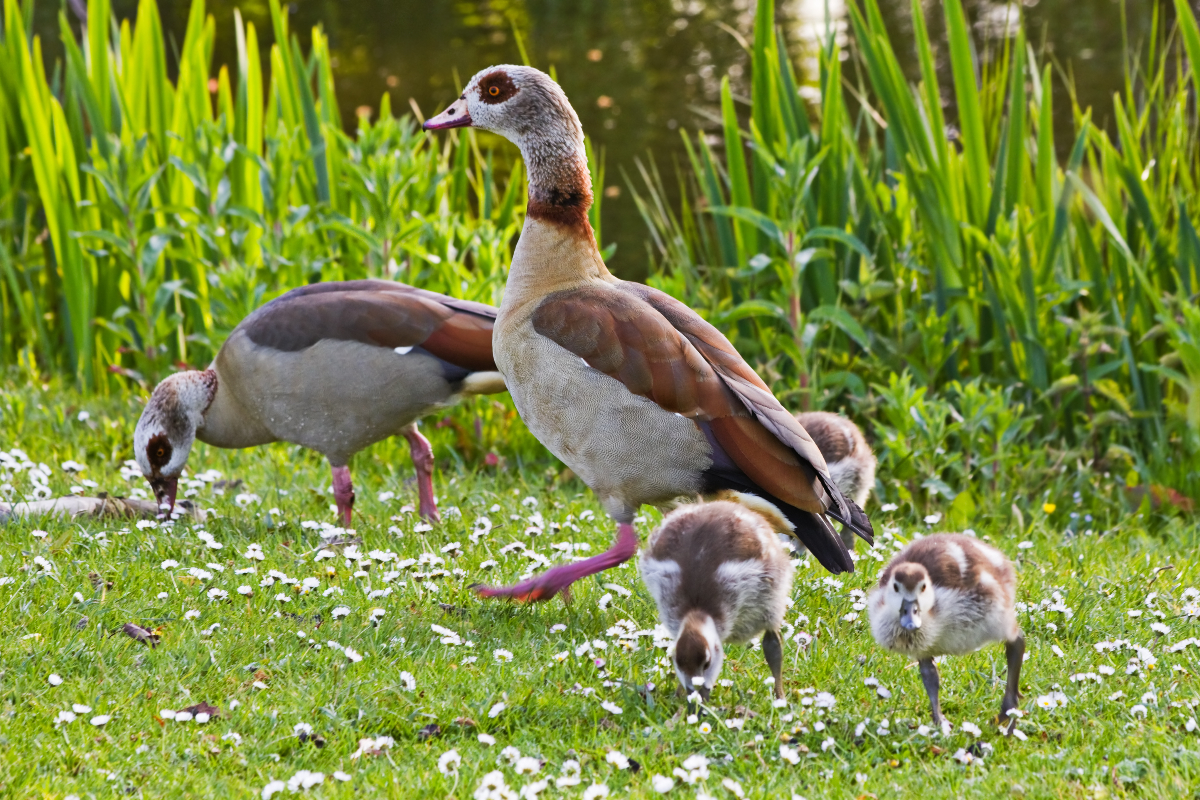The Egyptian Goose (Alopochen aegyptiaca) occupies a fascinating niche, not only in the realms of ornithology but also in the colorful tapestry of Egyptian mythology and history. These charming avians, with their eye-catching russet plumage, dark eye patches, and conspicuously pink legs, have effortlessly intertwined their existence with the lives and stories of the ancient Egyptian civilization.

Indigenous to Africa, the Egyptian Goose flaunts a predominant presence across the continent, sprinkling its habitat from the Nile Valley to sub-Saharan regions, and even venturing into parts of Europe. This species is celebrated for its adaptability to various environments, from wetlands and grasslands to human-altered landscapes like parks and agricultural areas.
A marked feature of these geese is their devotion to their offspring. Their breeding season unveils a tender aspect of their behavior. Pairs are monogamous, often forming lifelong bonds, and both parents diligently share the responsibility of raising their young. The female diligently incubates her eggs, while the male stands a vigilant guard, fiercely protecting his mate and future progeny from potential threats.
Stepping into the realm of mythology, the Egyptian Goose was symbolically potent to the ancient Egyptians, often associated with the goddess Isis, a deity revered for her associations with motherhood, fertility, and agriculture. Depictions of these geese adorn various artifacts and structures from ancient Egypt, immortalizing them amidst the narratives of gods, pharaohs, and mythical tales.
Despite being common and widely distributed, the Egyptian Goose invites a plethora of observations and intrigues, especially regarding its interaction with various ecosystems and its coexistence with humans. It has established populations in parts of Europe and North America, showcasing its remarkable adaptability and resilience in various geographical and climatic conditions.
The Egyptian Goose, with its warm, russet tones contrasting against a backdrop of luscious green or desert tan, symbolizes a rich connection between the natural world and human culture. It continues to grace its observers with its poised presence, reminding us of the delicate yet enduring links that exist between nature and mythology, offering insights not just into the realms of ornithology but also into our collective histories and tales.